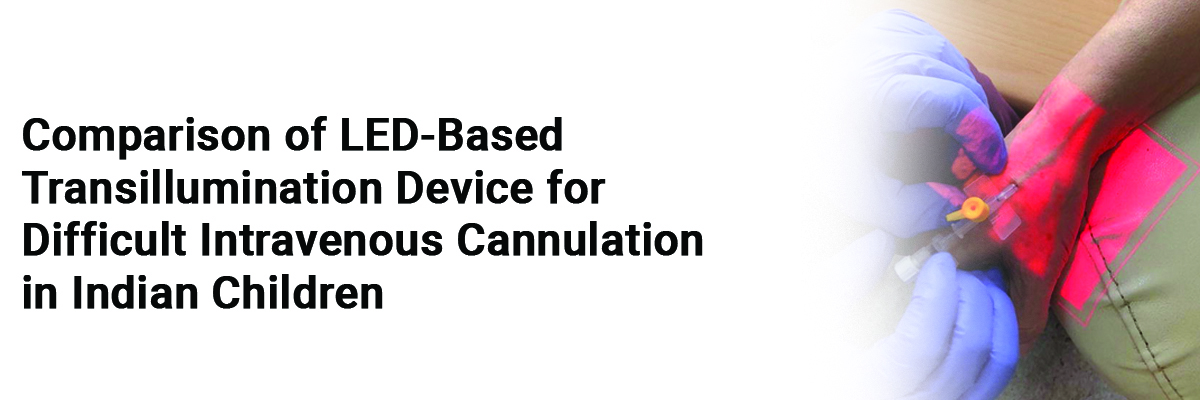
 IJCP Editorial Team
IJCP Editorial Team
Comparison of LED-Based Transillumination Device for Difficult Intravenous Cannulation in Indian Children
The recent study aimed to compare the effectiveness of a transillumination device versus traditional vein viewing in pediatric patients facing difficult peripheral venous access.
This was a nonrandomized controlled trial undertaken in a tertiary care referral hospital involving children aged 3-36 months with a Difficult Intravenous Access (DIVA) score of 4 or higher. The children were divided into two groups – one using the transillumination device (intervention) and the other using traditional vein viewing methods (traditional).
It was noted that the proportion of successful cannulation on the first attempt was significantly higher in the intervention group compared to the traditional group. In contrast, the median number of attempts required for successful cannulation was significantly lower in the intervention group. Bivariate analysis indicated that the transillumination device increased the likelihood of successful first-attempt cannulation by 2.64 times.
Thus, a transillumination device use significantly enhances the first-attempt cannulation success rate and reduces the number of attempts needed for successful venous access in pediatric patients with difficult peripheral veins.
Source: Dutt RD, Verma Y, Ranganath B, Gaur A, Bansal SC. Indian Journal of Pediatrics. 2023 Jun;90(6):548-54.

IJCP Editorial Team
Comprising seasoned professionals and experts from the medical field, the IJCP editorial team is dedicated to delivering timely and accurate content and thriving to provide attention-grabbing information for the readers. What sets them apart are their diverse expertise, spanning academia, research, and clinical practice, and their dedication to upholding the highest standards of quality and integrity. With a wealth of experience and a commitment to excellence, the IJCP editorial team strives to provide valuable perspectives, the latest trends, and in-depth analyses across various medical domains, all in a way that keeps you interested and engaged.




















Please login to comment on this article